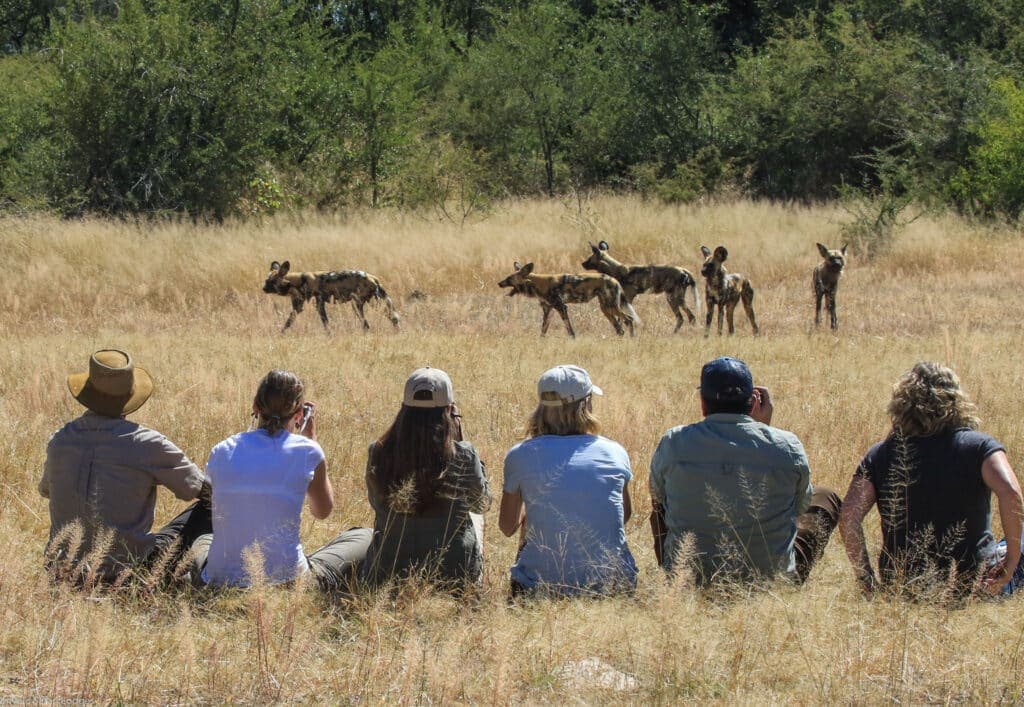Discover one of Africa’s prime wildlife destinations, Hwange National Park in Zimbabwe.
Renowned for its large elephant herds and diverse wildlife, Hwange offers exceptional safari experiences throughout the year. Whether you’re looking for spectacular game viewing, bird watching, or capturing stunning landscapes, understanding the best time to visit can enhance your adventure.
High Season vs. Low Season

High Season (July – October)
- Overview: The dry winter months provide ideal conditions for game viewing as animals gather around water sources.
- Pros: Excellent game viewing, pleasant temperatures, fewer mosquitoes.
- Cons: Higher prices and more tourists.
Low Season (November – March)
- Overview: The wet summer months bring lush landscapes and abundant birdlife, though wildlife viewing can be more challenging.
- Pros: Beautiful green scenery, excellent bird watching, fewer tourists.
- Cons: Higher temperatures, increased mosquito activity, and more challenging game viewing due to thick vegetation.
Month-by-Month Guide
January
January is hot and humid, with regular afternoon thunderstorms. While wildlife can be harder to spot due to dense vegetation, the park’s lush greenery and baby animals make it a vibrant time to visit. Bird watchers will be delighted by the presence of migratory species.
February
Similar to January, February is hot and wet, with frequent thunderstorms. Game viewing is challenging, but the landscape is stunningly green, and there’s an abundance of newborn animals. This month is ideal for bird enthusiasts and photographers looking to capture the park in its verdant glory.
March
March sees the tail end of the wet season. The weather begins to dry out, making it slightly easier to spot wildlife. The park remains lush and green, providing picturesque scenery and continued excellent bird watching opportunities.
April
April marks the transition to the dry season. The rains subside, and the park starts to dry out, making wildlife more visible. This is a fantastic time to visit for a balance between lush landscapes and improved game viewing.
May
May offers cool, dry conditions, with wildlife becoming more concentrated around water sources. The vegetation thins out, enhancing visibility for game drives. It’s a great time for photographers to capture the park’s diverse wildlife against stunning backdrops.
June
June begins the high season for Hwange. The weather is cool and dry, making it ideal for game viewing as animals gather around the diminishing waterholes. This is one of the best months for wildlife sightings.
July
July continues the prime game viewing season. With dry, cool weather, wildlife is easily spotted around water sources. Tourist numbers increase, but the park’s vastness ensures a memorable safari experience.
August
August remains dry and cool, with excellent visibility for game viewing. Wildlife congregates around waterholes, providing spectacular sightings. This month is ideal for those looking for an active safari experience with comfortable temperatures.
September
September is another peak month for game viewing. The dry conditions reach their height, and animals are highly concentrated around the remaining water sources. The temperatures start to rise, but wildlife viewing remains exceptional.
October
October signals the end of the dry season, with temperatures soaring. Wildlife viewing is still excellent, but the heat can be intense. This month offers dramatic wildlife scenes as animals congregate around the last waterholes.
November
November brings the start of the rainy season, with sporadic thunderstorms beginning to green the landscape. Wildlife viewing becomes more challenging as animals disperse, but the park’s transformation and the arrival of migratory birds make it a captivating time to visit.
December
December is characterized by hot, wet conditions with regular rain showers. The park is lush and green, making game viewing more difficult but rewarding for bird watchers and those looking to see the park at its most vibrant.
Regional Climate Overview

Dry Season (July – October)
- Best for: Game viewing as animals congregate around water sources. Cooler temperatures make it comfortable for outdoor activities.
Wet Season (November – March)
- Best for: Lush landscapes with baby animals and excellent bird watching opportunities. Afternoon thunderstorms are common.
Best Time for Activities
| Activity | Best Time to Visit |
|---|---|
| Game Viewing | July to October |
| Birdwatching | November to March |
| Photography | May to September |
Plan Your Trip
Hwange National Park offers diverse and unique experiences throughout the year. Whether you’re looking for exceptional game viewing, bird watching, or capturing the park’s beauty through your lens, understanding the best times to visit can enhance your adventure.
With over 20 years of experience, Discover Africa will help you tailor your Hwanga National Park itinerary for the perfect safari experience. Enjoy 24/7 support, authentic experiences and personalised service from our team of experts..
Start planning your dream safari to Hwange National Park today and create memories that will last a lifetime. Contact us to get started!